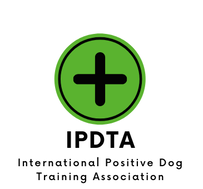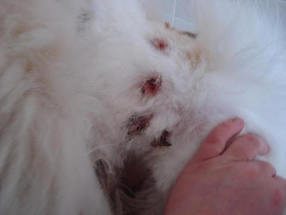THE GOLD STANDARD FOR FORCE FREE DOG TRAINER CERTIFICATION COURSES AND PROGRAMS
International Positive Dog Training Association Standards - What is Dog Abuse?
The definition of abuse is physical, emotional or psychological injury caused by mistreatment or the misuse of power associated with authority. It is a corrupt practice or custom, improper or excessive use or treatment. It is a deceitful act, it is a communication that condemns or vilifies unjustly, intemperately and angrily. Abuse can be either intentional or unintentional.
International Positive Dog Training Association - Definition of Dog Training Abuse
IPDTA defines abuse in dog handling, training and/or behaviour modification as the use or misuse of any tool or technique created or used with intent or that unnecessarily causes; intimidation, distrust, stress, anxiety, fear, pain and/or injury and includes anything that causes unnecessary physical, psychological or emotional harm. The term "necessary" only applies when it's necessary to handle a dog, keep it safe or save it from harm or the mild exposure to a stimulus necessary when applying desensitization or counter-conditioning programs.
Those who truly love dogs do not wish to frighten or hurt them!!!
IPDTA believes the following tools or techniques come with high risk of misuse, abuse and/or malfunction and as a result are not to be used by IPDTA members; choke chains, slip collars, pinch collars, shock equipment and spray training products. This also includes alpha rollovers or any other forms of physical pushing, punishing and/or intimidation or domination, hanging, kicking or hitting of any kind. It also includes any other tool or technique that causes intimidation, distrust, stress, anxiety, fear or pain for the dog or any tool or technique that causes physical, psychological or emotional harm. Any tool or technique designed to be aversive in nature is not to be used by our members.
Those who truly love dogs do not wish to frighten or hurt them!!!
IPDTA believes the following tools or techniques come with high risk of misuse, abuse and/or malfunction and as a result are not to be used by IPDTA members; choke chains, slip collars, pinch collars, shock equipment and spray training products. This also includes alpha rollovers or any other forms of physical pushing, punishing and/or intimidation or domination, hanging, kicking or hitting of any kind. It also includes any other tool or technique that causes intimidation, distrust, stress, anxiety, fear or pain for the dog or any tool or technique that causes physical, psychological or emotional harm. Any tool or technique designed to be aversive in nature is not to be used by our members.
The International Positive Dog Training Association believes that any use of punishment, force or unnecessary restraint are unacceptable in dog training and professional certified dog trainers should always employ positive dog training methods and protocols.
International Positive Dog Training Association - Criteria For What Is And What Is Not Humane and Force Free Dog Training
IPDTA deems a tool or technique to be acceptable or unacceptable based on the risk of misuse, abuse and/or malfunction in the hands of the average dog handler. Because few handlers can meet the list of criteria for the humane use of aversives (below), we take a stand against aversives for our dog's physical, psychological and emotional wellbeing.
Criteria For The Humane Use Of Aversives
This involves:
The great news is that this type of training is unnecessary to successfully achieving effective, long term results.
Criteria For The Humane Use Of Aversives
- The dog must be taught the desired incompatible behaviour before the correction is administered.
- The correction must be properly executed.
This involves:
- An accurate understanding of the proper application of the correction.
- Experience with proper use of the correction.
- An accurate understanding of the individual dog, its temperament and threshold.
- An understanding of canine behaviour.
- An understanding of canine communication and body language including; calming signals, deterrent behaviour, signs of stress, anxiety and fear.
- Excellent timing
- Excellent reflexes and coordination.
- Awareness, sensitivity and compassion for the dog.
- The severity of the correction must be suitable to the dog’s temperament, level of sensitivity and threshold.
- The handler must deliver the correction with self-control and without emotion.
The great news is that this type of training is unnecessary to successfully achieving effective, long term results.
For proven and positive dog training alternatives contact Norma Jeanne, creator of Canine Correspondence Studies Professional Dog Trainer Certification Courses and Programs, and Founder of the International Positive Dog Training Association.
Prong/Pinch Collar Injury

